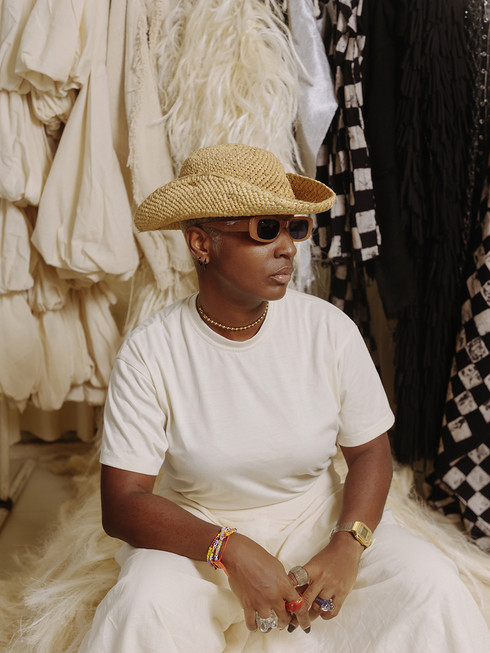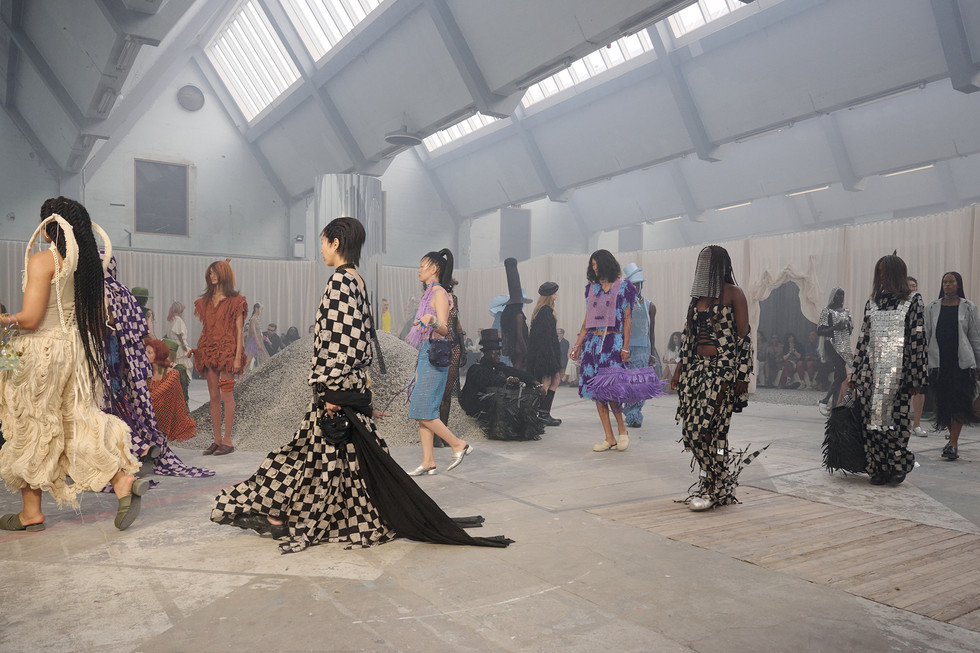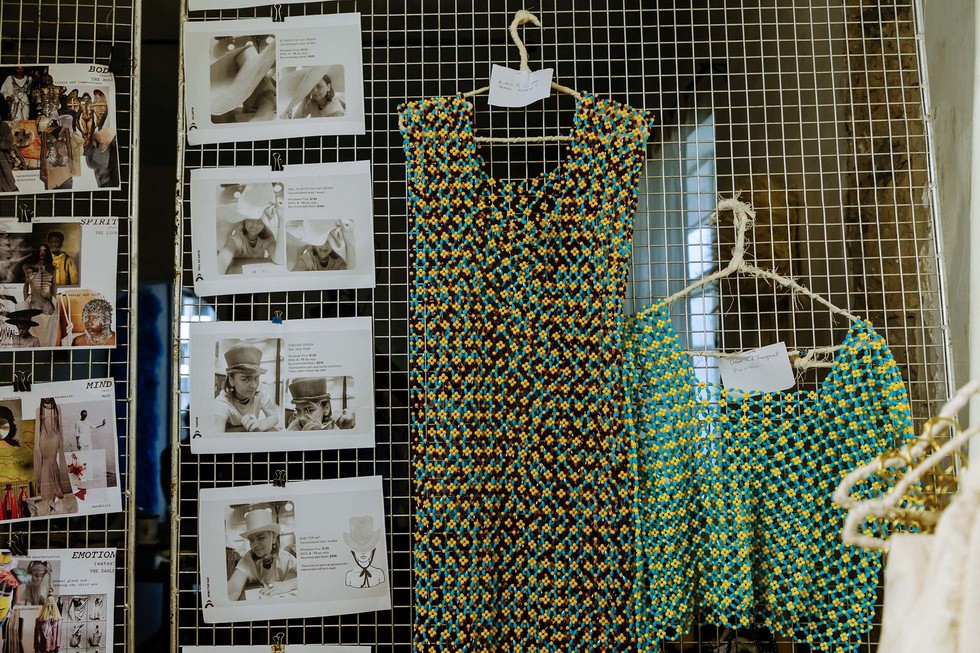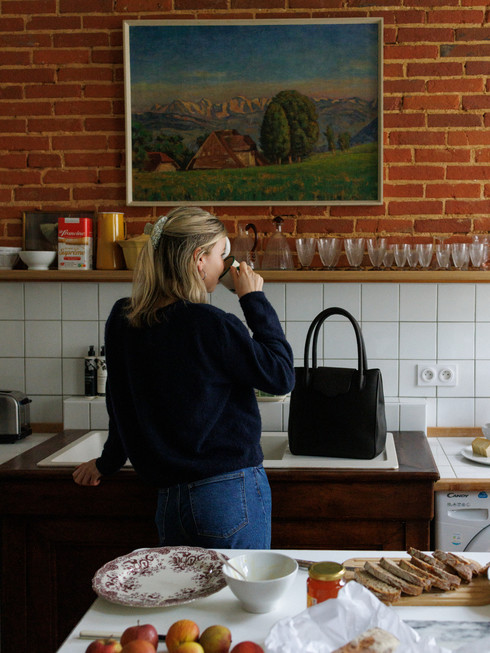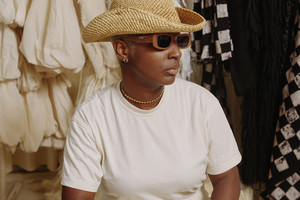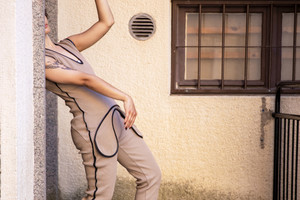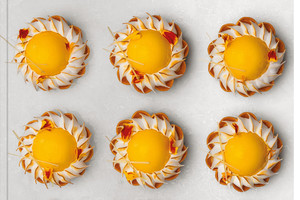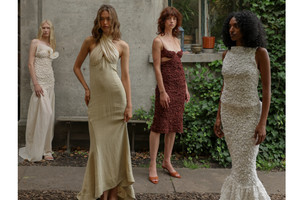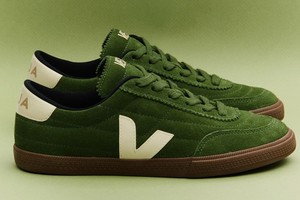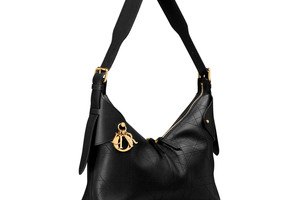In the Weave of Creation: Four Designers on Fashion, Nature and Norrviken
Written by Natalia MunteanOn August 6th, Norrvikens trädgårdar in Båstad opened In the Weave of Creation, an exhibition where nature and fashion intertwine. Four of Sweden’s most boundary-pushing designers, Bea Szenfeld, Frida Jonsvens, Linnéa Samia Khalil and Martin Bergström, have each transformed the gardens into a living canvas. Their works, created in dialogue with the surroundings, invite visitors to reflect on fleetingness, sustainability and the interplay between the cultivated and the wild. Discover more about the artists’ inspirations, processes and the stories woven into their creations.
Bea Szenfeld
Natalia Muntean: You call paper “nature's material.” How did the gardens inspire your paper sculptures this time?
Bea Szenfeld: My work both blends into and contrasts with the natural surroundings. I consciously work with materials, shapes, and colours that either draw inspiration from nature or break away from it - to raise questions about our relationship with the environment. My artistry is not only about aesthetics but also about dialogue — between the artificial and the organic, the temporary and the enduring. I want the viewer to pause and reflect on what is natural, what we take for granted, and how human imprints alter the landscape over time. By placing the works in direct relation to the surroundings, new layers of meaning emerge that can only be experienced on site.
NM: Your works look delicate, but last outdoors. How do you make paper withstand the garden setting?
BS: My sculptures can be taken outdoors, if absolutely necessary. However, it's not something I prefer or recommend. Some of my works can't even withstand wind, and definitely not rain.
NM: You say you “listen to nature's voice.” Did any specific spot in Norrviken speak to you?
BS: Norrviken is a place where nature and human care meet in harmony. The gardens carry a history of vision and a longing for beauty, but also for order within chaos. That inspires me. I like Norrviken because it’s a place where every detail feels intentional, yet nature is still allowed to breathe freely. There is time here. Silence. And a kind of breathing space for both visitors and ideas. One place I often pause at is the mirror pond where the world is turned upside down. The surface is still, but beneath it, life moves. Sometimes I catch a glimpse of a salamander, quiet and almost primaeval, like a living fragment of something we’ve nearly forgotten we share the world with.
NM: What should visitors notice about how your pieces interact with the natural surroundings?
BS: What happens when 'nature' becomes an excerpt from an archive, a glossy photograph, a word without a body. A field that has never carried a scent. Without nature present around us — in sound, in smell, in change — the direct experience is lost. We can read about trees, see pictures of clouds, listen to old recordings of birdsong, but we won’t feel them. Without contact, understanding dies. And without understanding, memory dies.
Perhaps one day in the future, someone will hold up a plastic model of a flower and call it nature. Perhaps nature will become something mysterious, mythological, the way we now think of extinct species or ancient ruins. That is why we must preserve not just the physical landscape, but also our living relationship with it. So that the future will not only know what nature was, but still be able to experience it.
Frida Jonsvens
Natalia Muntean: Your designs reuse forgotten materials. What surprising things did you repurpose for this exhibition?
Frida Jonsvens: When the imagination is allowed to roam freely, there are no limits. Curtains have become flower petals, and crystal chandeliers have turned into pistils. For this particular exhibition, I’ve thoroughly searched second-hand shops all over Sweden and found eight vintage crystal chandeliers, which I carefully dismantled by hand, one by one. I then worked with a total of 64 old curtains, cutting them into thousands of flower petals and using them to create flowers.
NM: The gardens blend wild and designed areas. How does your work reflect this mix?
FJ: My flower cloak represents the wild. Each petal is unique, handcrafted from repurposed curtains and crystal chandeliers. What was once loved, forgotten, or discarded is allowed to bloom freely once more. Beneath the cloak rests a shimmering crystal dress, inspired by the architecture of the Victoria House. Together, they form a poetic whole - Norrviken expressed through fabric, colour, and light. The piece is a tribute to nature, to the beauty we already have, and to the art of seeing value where others see waste.
NM: You talk about “blooming beauty.” Which flowers inspired your designs?
FJ: All of them! I’ve truly been inspired by the entire garden’s colour and form.
NM: How do your voluminous shapes connect to the garden's natural forms?
FJ: That’s exactly what I see in the garden as well. For example, Norrviken’s magnificent rhododendrons carry volume in an absolutely stunning and inspiring way.
Linnéa Samia Khalil
Natalia Muntean: You challenge traditional silhouettes. How did the gardens' natural shapes inspire your designs?
Linnéa Samia Khalil: I love it when something imperfect can still be beautiful and captivating. Just like nature, dynamic, organic, and irregular. Creating something where you're led forward by the process itself, shaping the lines as the creation unfolds, you can’t replicate it, and no curve is ever the same. That’s something I find incredibly fun and fascinating to work with.
NM: Your clothes “tell stories.” What story do these garden pieces tell?
LSK: The piece I’m creating for Norrviken is all about the unpredictable. The twists you didn’t see coming. The meeting of softness and hardness. The organic.
NM: How did creating work in this natural setting push your creative boundaries?
LSK: It’s been a challenge to create this piece precisely because there are no rules or frames to lean on. Planning or sketching didn’t work, since every curve and every part of the creation was shaped in the moment. And being limited to the materials I had set aside for this project has also been demanding. Early on, I decided I would only use white organza, donated by a company that would have otherwise thrown it away.
NM: How can unconventional fashion help us see nature differently?
LSK: Allowing yourself to understand and appreciate the imperfect, the living, the unrestrained and boundless, is powerful, especially in a world and in fashion, where structure so often dominates. Let playfulness exist. See the beauty in the raw.
Martin Bergström
Natalia Muntean: Your patterns blend wild and cultivated elements. How did Norrviken's garden inspire this mix?
Martin Bergström: I was inspired by the vision of the Norrviken garden founder Carl Rudolf Zacharias Abelin’s choices of flora. I like the idea of a dandelion growing next to an orchid, wild and refined side by side.
NM: The jacquard weave captures the garden's essence. What details did you include in the pattern?
MB: The pattern features a meeting between cultivated and wild plants — edible versus poisonous.
I wanted to reflect the garden’s layered character, where beauty often hides complexity. These contrasts capture the essence of Norrviken: controlled yet untamed, delicate yet powerful.
NM: You're inspired by myths and nature's mysteries. Did any specific legends influence these works?
MB: Not a specific legend, but I was deeply inspired by the symbolism of soil — this rich, brown, almost magical material. It holds both death and birth at once, carrying the cycles of nature within it. I find that incredibly powerful. Soil may seem simple, but to me, it represents transformation, mystery, and life itself. I love working with that idea.
NM: How do your textiles help us see the garden's history in new ways?
MB: Textiles have a unique way of holding memory — through material, texture, and time. I try to reflect the layered history of the garden itself. Norrviken isn’t just a beautiful space; it’s a place shaped by vision, care, and change over generations. My textiles become a kind of soft storytelling, inviting visitors to not only see the garden’s past, but to feel it, reinterpret it, and connect with it in a new, tactile way.
Photographer Thomas Klementsson




